The Partnership

|
The University of Oxford The University of Oxford is one of the leading research universities in the world. Bioscience research in Oxford is centred in seven departments that receive significant BBSRC funding, which include the Departments of Biochemistry, Zoology, Plant Sciences, Physiology, Anatomy & Genetics (DPAG), Chemistry, Experimental Psychology and the Dunn School of Pathology, with additional bioscience research being undertaken in the Departments of Physics, Engineering, Structural Biology, Statistics, Computer Science and The Mathematics Institute, as well as in departments associated with clinical and pre-clinical medicine. |
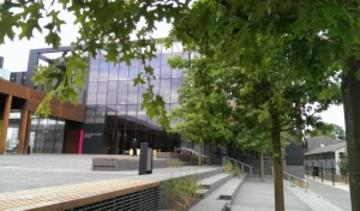
|
Oxford Brookes University The Department of Biological and Medical Sciences at Oxford Brookes within the Faculty of Health and Life Sciences is home to the majority of biological and biomedical research carried out within the University. Research in the Department spans a wide range of topics, including plant and animal biology, biomedical science, cell and molecular biology, conservation and the environment, and the department is home to the BBSRC funded Oxford Consortium for 3-D electron microscopy. |
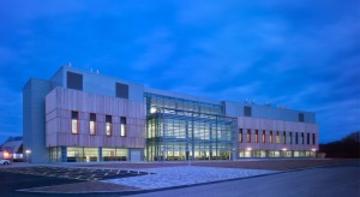
|
The Pirbright Institute The Pirbright Institute is a world leading centre of excellence in research and surveillance of virus diseases of farm animals including those that spread from animals to humans. Through fundamental and applied research aimed in improving control strategies of these important diseases, the Institute aims to ensure global health & wellbeing, economic and food security. The Pirbright is also an important national capability with unique combination of excellent expertise, high bio-containment laboratories and animal facilities, exclusive biological resources such as extensive reference virus collections, genetically-defined farm animal hosts, all of which provide excellent environment for scientific research. Pirbright has a very active postgraduate training programme for studying towards PhD/DPhil aimed at developing the next generation of scientists to take forward research on infectious disease biology. |
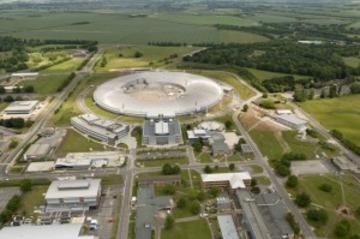
|
Diamond Light Source Diamond Light Source Ltd. is the largest operating medium energy 3rd generation light source in the world. It is located at the Rutherford Appleton Laboratory (RAL) in Oxfordshire which it shares with ISIS the UK‟s pulsed neutron and muon source. Currently, 24 beamlines are in operation and, by 2018 the facility will provide 33 operating beamlines covering a broad spectrum of scientific applications. The life science suite of beamlines currently consists of five operating macromolecular crystallography (MX) beamlines, and beamlines dedicated to small angle X-ray scattering, circular dichroism, infrared microspectroscopy and X-ray spectroscopy. This will expand in the next years to include a full field transmission cryo X-ray microscope for biology and additional SAXS and MX capabilities as well as facilities for hard X-ray imaging and coherence experiments. Associated facilities integrated with Diamond include the Wellcome Trust funded Membrane Protein Laboratory which provides facilities for research training and methods development in the important area of membrane protein structural biology; an electron bioimaging facility which will offer the imaging approaches of single particle analysis of biological macromolecules and cellular tomography as well as electron crystallography and a centre dedicated to methods development as well as aiding access to X-ray free electron lasers – the X-FEL Hub. |
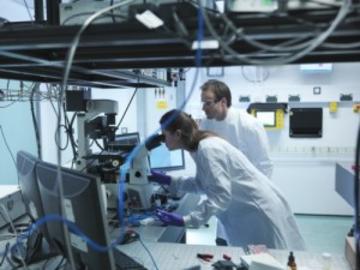
|
STFC Central Laser Facility The Central Laser Facility (CLF) is one of the world's leading laser facilities providing scientists from the UK and Europe with an unparalleled range of state-of-the-art laser technology. The CLF's wide ranging applications include chemistry and biology, probing chemical reactions on the shortest timescales and studying biochemical and biophysical processes critical to life itself. It is the home of the OCTOPUS imaging cluster, an advanced imaging facility operating in the Research Complex at Harwell, together with the ULTRA facility which is used for ultrafast dynamics research. The CLF's role in the Research Complex is to develop and exploit new advanced imaging and spectroscopy techniques to address grand challenges in the life sciences area. |
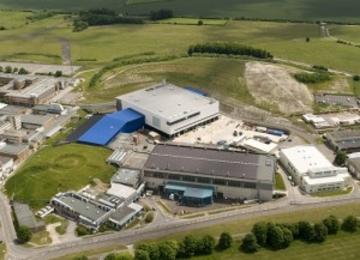
|
ISIS Neutron and Muon Source ISIS is a world-leading centre for research in the physical and life sciences at the STFC Rutherford Appleton Laboratory near Oxford in the United Kingdom. The suite of instruments provides beams of neutrons and muons that enable scientists to probe the microscopic structure and dynamics of matter at the molecular and atomic level. ISIS supports a national and international community of more than 3000 scientists for research covering topics at the forefront of Physics, Chemistry, Materials Science, Earth Science, Engineering and Biology. This includes biologically relevant complex systems and biopolymers through to pharmaceuticals and health care, from looking at the structure of small molecules to the shape of large molecular machines and technologies to develop drugs for controlling disease. |
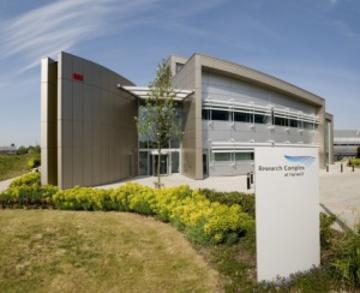
|
Research Complex at Harwell The RCaH is a multidisciplinary laboratory carrying out internationally-leading research using the major national facilities at Harwell Oxford, such as Diamond, ISIS and the Central laser Facility. It also houses several national facilities for research in structural and molecular biology: the Oxford Protein Production Facility-UK (OPPF-UK), Collaborative Computing Project No. 4 (CCP4) and part of the Membrane Protein Laboratory (MPL). RCaH research focuses on four major themes, Imaging, Structural Molecular Biology, Dynamic Processes & Catalysis and Materials. The themes cross the traditional boundaries between biology and the physical sciences where, for example, the same imaging techniques can be used for biological material or engineering components. RCaH provides a unique environment where biologists, chemists, physicists, materials scientists and engineers share lab space and work together. |

|
Rosalind Franklin Institute |

|
Novo Nordisk Research Centre Oxford Novo Nordisk Research Centre Oxford is an innovative target discovery and translational research unit with a focus on identifying novel, game-changing therapies for patients with type 2 diabetes and cardiometabolic diseases. Employing advanced computational biology, state-of-the-art discovery screening technologies, genetics and human-centric cell systems to dissect pathophysiology and identify novel drug targets. The site is a fusion of the best of academia, biotech and big pharma in order to realize cutting-edge biology and start a target’s journey from bench to bedside. |


